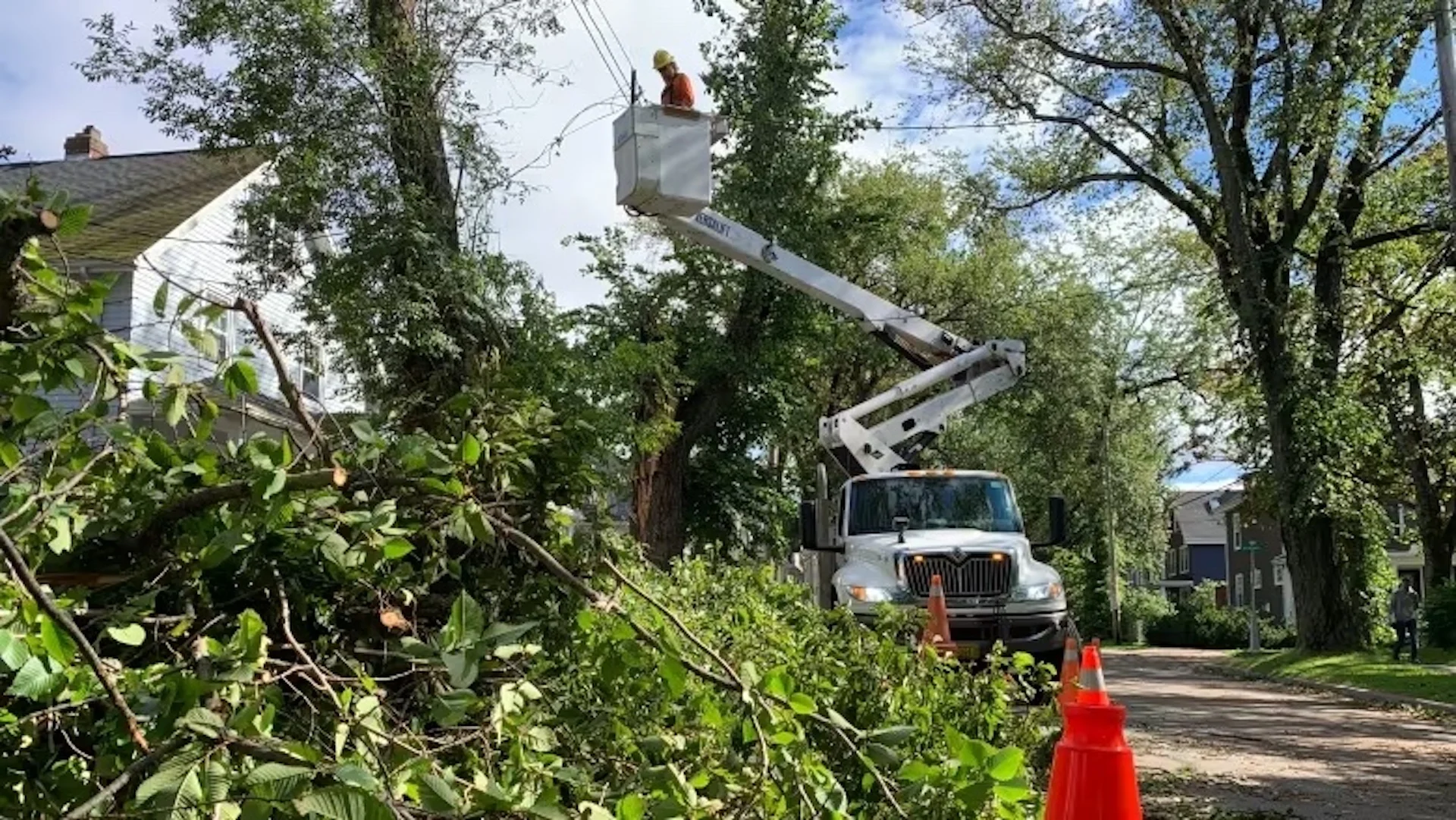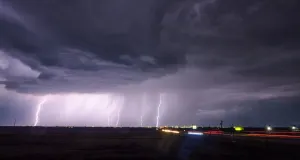
Cleanup from Lee continues as thousands remain without power in Nova Scotia
Visit The Weather Network's hurricane hub to keep up with the latest on tropical developments in Canada and around the world
Cleanup work continues after post-tropical storm Lee blew through the region, with thousands of residents still without power in Nova Scotia.
More than 9,000 Nova Scotia Power customers were still without electricity Monday night. Some estimated restoration times were as late as 11 p.m.
More than half of Nova Scotia Power customers — 277,000 — were affected by power outages throughout the storm, which began blowing through the region Friday evening.
The National Hurricane Center in the U.S. said the storm made landfall in Long Island, N.S., around 4 p.m. Saturday, with maximum sustained winds of 110 km/h.
PHOTOS: Powerful Lee leaves impactful mark on the Maritimes, one injured
Top wind gusts of 117 km/h were recorded at the Halifax Stanfield International Airport, while southwestern Nova Scotia saw gusts of between 90 and 110 km/h and between 30 and 60 millimetres of rainfall.

A boardwalk in Eastern Passage has been washed away by post-tropical storm Lee. (Adrien Blanc/Radio-Canada)
There were no reports of major infrastructure damage or of missing people, injuries or deaths. Lee did claim the life of at least one person south of the border — a 51-year-old motorist in Maine died after a large tree limb fell on his vehicle Saturday.
All roads in the Halifax area were open, and the Halifax Public Gardens and Point Pleasant Park reopened Monday. Camp Hill Cemetery will remain closed until further notice.
"There are still areas in several municipal parks that require clean up from downed trees and debris from the storm," the city said on its website. "Residents are reminded to adhere to signage and to stay clear of barricaded areas."
Halifax, Truro, New Glasgow and the western part of the province, which includes the South Shore, the Annapolis Valley, Digby, Yarmouth and Shelburne County, were hardest hit by the storm, the utility said in a release.
SEE ALSO: Fiona versus Lee: How powerful but different these hurricanes are
In an interview with CBC Nova Scotia News at Six, Carolyn Bolivar-Getson, the mayor of the Municipality of the District of Lunenburg, said Lee did more damage to the shoreline than Hurricane Juan, a powerful storm that swept through the province in 2003.
"I spoke with a lot of the residents that have lived there their entire lives and they have said that this was definitely by far the worst storm that they have experienced so far," Bolivar-Getson said.

This vehicle on Kent St. in Halifax's south end was damaged during post-tropical storm Lee. (Shaina Luck/CBC)
Rissers Beach Provincial Park, a popular seaside camping destination in Petite Rivière, N.S., on the province's South Shore, was extensively damaged by the storm surge, and is closed until further notice.
Rob Paddock, of the provincial Department of Natural Resources, said there is substantial damage to infrastructure — including the boardwalk — and numerous trees were uprooted.
The province said a small timber bridge on Green Bay Road near Petit Rivière was damaged, but crews were able to reopened one lane.
"In that area, now Green Bay, it lifted the armour rock up. It destroyed the road. It just peeled the asphalt away. It flung rocks back on people's lawns. [A provincial crew] was there yesterday trying to rough in a road and they were successful in doing that, so that people were able to move back and forth. But until that time it was rock climbing," Bolivar-Getson said.

A tree was uprooted on Kent Road in Halifax. (Nova Scotia Power)
No other roads or bridges have significant damage, but four provincial roads are closed mostly due to rocks and debris. Four other provincial roads are passable with caution and all ferries are back in service.
The province said there are no significant costs expected from this work.
He said staff were doing a full assessment of the damage on Monday, as well as beginning to clean up.
"All of our beach parks get damaged with every major storm event.... But I would say in Lunenburg, for me, Rissers was the park that got the brunt of the storm," said Paddock, adding there is no estimate for when the park would reopen.

Part of a shed is shown in the water at Purcells Cove on Sunday. (Mary-Catherine McIntosh/CBC)
Provincial camping parks were closed on Friday ahead of the storm. Paddock said a number of parks would remain closed for days or even weeks. Eight parks, however, were open as of 2 p.m. Monday. They are:
Battery Provincial Park.
Blomidon Provincial Park.
Caribou–Munroes Island Provincial Park.
Ellenwood Lake Provincial Park.
Mira River Provincial Park.
Porters Lake Provincial Park.
Valleyview Provincial Park.
Whycocomagh Provincial Park.
CBC meteorologist Ryan Snoddon said the heaviest rain fell northwest of Lee's track, where amounts of 50 to 100 millimetres or more were recorded.
WATCH: Snowing in Nova Scotia? Massive amounts of seafoam wash ashore post-Lee
Thumbnail image courtesy: Shaina Luck/CBC.
This article was originally published by CBC News.









